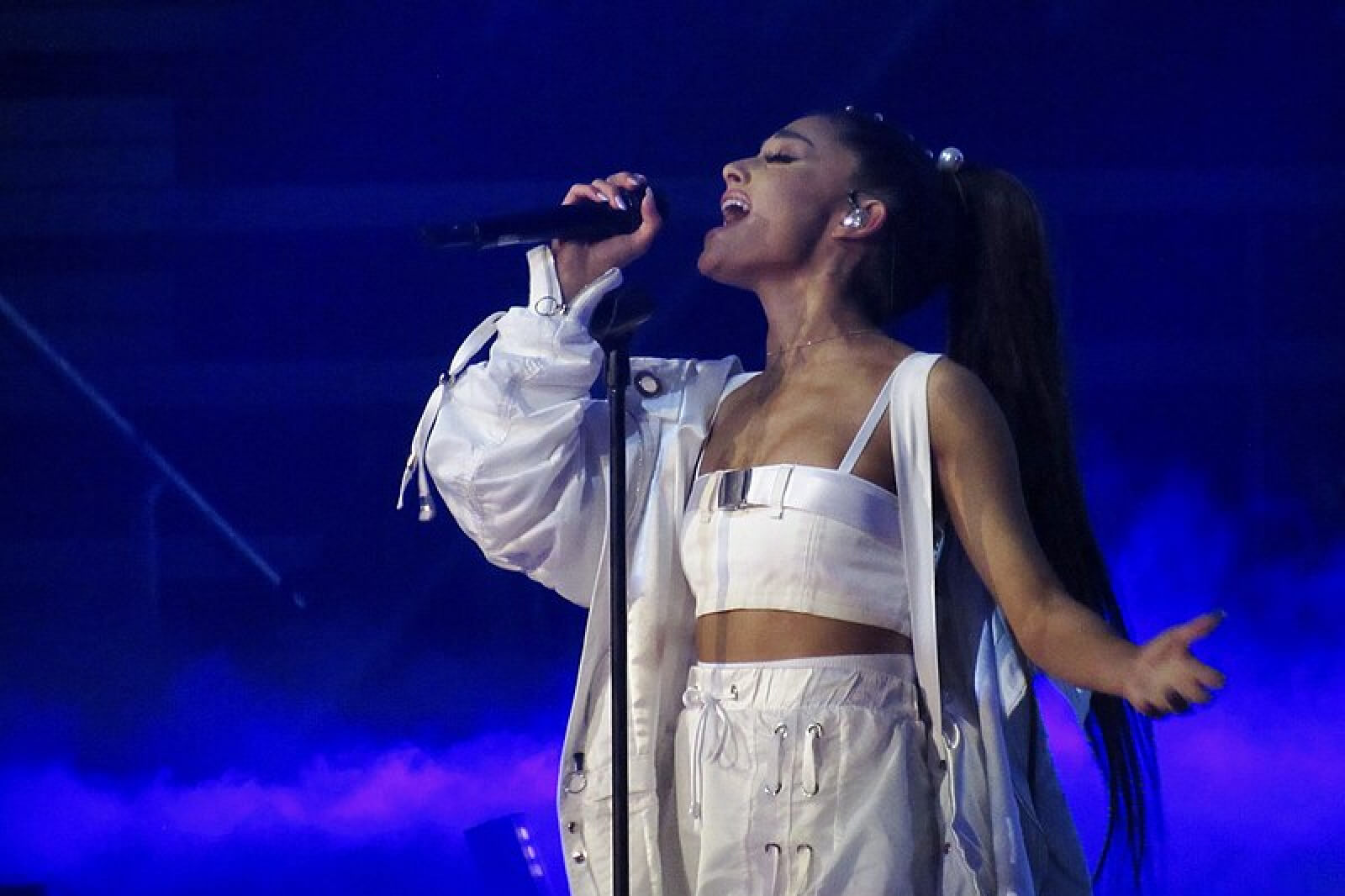
Justice for Samantha though
via HBO
Update: June 6 2021
As Sex and the City celebrates its 20th anniversary and the reboot is on its way, for fans of the show, this means it is officially peak rewatch season.
When news of the iconic show’s revival — a 10 episode HBO Max series titled And Just Like That — hit, SATC devotees were eager to dive back into that fairytale version of New York City to the tune of a classic Carrie Bradshaw monologue.
However, despite the nostalgia spurred by the return of many 90s-early 2000s phenomena, watching them in 2021 can be mortifyingly cringe inducing. Did we really watch this? we ask ourselves, wondering how we ever took Carrie’s fake-deep musings as gospel, or aspired to be like characters who now seem outdated and, in a lot of ways, even embarrassing.
While the core of the show still holds — portraying the lives, romantic exploits, and interests of women in a refreshing (for its time) new light that celebrates female friendships instead of belittling women for being interested fashion or having their own real lives — what that “empowerment” looked like in 2001 is very different than what it would look like in 2021.
Another nostalgic giant Friends has also been forced to reckon with its outdated, sometimes offensive, episodes and flawed premise. And yet, the 2021 Friends Reunion special drew audiences who watched the show in its prime and newer audiences alike.
So what’s the thing that keeps shows like this evergreen? We can’t say. Maybe it’s the nostalgia, maybe it’s the comfort of simpler times, maybe it’s the charm of the cast.
Most likely, it’s our own dreams that we project onto shows like Sex and the City and Friends, in which the characters may not have it all together, but they still feel aspirational, and we still want to live their lives.
Whatever it is, for many fans, the 20 year anniversary of SATC coupled with the impending And Just Like That premiere is serving as inspiration for Hot Girl Summer.
And so the question remains: Are you a Carrie, Miranda, Samantha, or Charlotte?
Original Article:
Inevitably, Sex and the City is making a comeback.
In a recently announced reboot, Carrie, Miranda, and Charlotte will be returning to our screens — kind of. The new limited series, titled “And Just Like That…” will be coming soon to HBO Max.
The 10 episode spin off was confirmed on Instagram with a teaser that Sarah Jessica Parker posted with the caption: “I couldn’t help but wonder… where are they now?” The new series gives the answers.
There will be some changes from the original series. First off, Kim Cattrall will not be returning as Samantha. Despite rumors that Jennifer Coolige, or even Caitlyn Jenner, will be her replacement, Sarah Jessica Parker has responded saying the revival has “New York City as the fourth character,” which, admittedly, makes no sense but feels on brand.
Sex and the City isn’t about making sense. The show has gained its cult following because of its aspirational and whimsical portrait of life in New York City. The logic is an afterthought.
After 16 years and two movies, the franchise still retains its inexplicable hold on popular culture. Even those of us who were too young to have watched it premiere have since caught up through endless reruns and a prequel. For better or worse, Carrie and co. are the paragons of what it means to be very young in New York, the blueprints of a bygone era that we love just the same.
But can the series sustain another reboot? What made the show so iconic was the lawlessness of the late ’90s to the early-2000s, the liminal era right before the completely digital age.
It was boundary-breaking at the time, but the landscape has changed. The lives and times of four thin white women in New York is a tired premise, and much of the show’s magic is outdated.
Yet, the news of the reboot was met with excitement from loyalists who are excited to see what the gang has been up to in the years between the last movie and now.
But before we watch the reboot, we have some questions. So much of the show has been allowed to go unexamined because of the legendary status of the series as a whole. And while the legacy of the show and its beloved characters might have carried the ephemera of the original into the new age, some more problematic elements need to be acknowledged and accounted for in the new series.
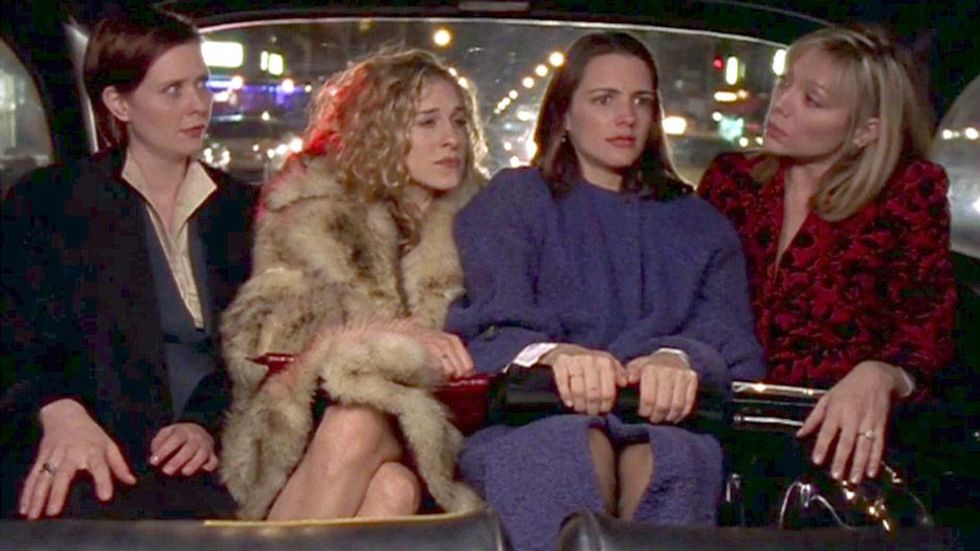
Just, Like, the Logistics?
First things first: No young fashion editor is making enough to live in Carrie’s apartment, let alone considering her lavish lifestyle habits.
This long-had critique of the show persists because anyone living in New York knows that a studio on the Upper East Side (or the West Village, where the famous brownstone stills of the apartment’s exterior were shot), even one where you have to keep your sweaters in your oven, costs a pretty penny.
The show used the same half-satisfying, cliched explanation that Friends used to explain their loft: It was rent-controlled. Carrie claimed to pay just $700 a month for her apartment, which is unheard of, and never explained how she lucked into such an anomaly of a situation — that could have been an episode in itself.
Today, many magazine editors with Carrie’s purported level of influence supplement their income with Instagram brand deals and sponsorships to fund the more indulgent aspects of their lifestyle and stock their wardrobes with the latest pieces. But how did Carrie do it?
Between her refusal to take the subway (every New Yorker is rolling their eyes) and her weakness for designer shoes, someone get us to Carrie’s financial planner. We have some questions. Many have since tried to do the math on how much Carrie had to have been spending and the numbers get astronomical.
The magic of credit cards, we have to guess.
By the end of the series, Carrie does pick up a side hustle: freelancing at Vogue. She also lands a book deal and, oh yeah, marries rich.
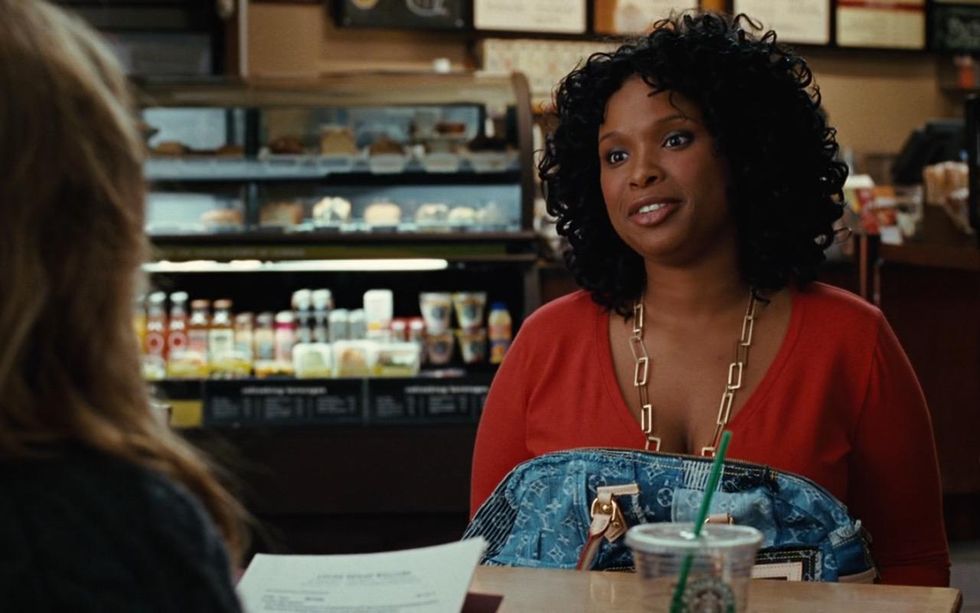
The Diversity. Or Lack Of It.
I have to wonder … is this some kind of alternate New York City in some alternate media and fashion industry in which Black people don’t exist?
Of the few episodes to prominently feature non-white characters, many moments dealing with race and sexuality were problematic at best. From fetishizing Black men and perpetuating the “angry Black woman” stereotype in the episode where Samantha dates a Black record executive (ah yes, such an inventive career choice for a Black character … the music business) to biphobia and LGBTQ slurs, the women on the show were not the paragons of inclusivity.
The show’s startling lack of diversity could only have been possible in the era where Friends got away with the same egregious whitewashing of New York City, and fans will be watching to see how the reboot handles its fatal flaw.
Some are calling for a Samantha replacement who represents a marginalized community, even pushing for Jennifer Hudson to reprise her role as Louise from St. Louis in a more prominent role. Others, however, think this would be a cheap fix, and not do enough to address the fact that the gang spent so many years in such a bubble.
Some executives have responded to fan speculation, saying the reboot will be “as racially diverse and colorful as New York city itself.” The use of the word “colorful” does not bode well.
Whatever the revival holds, audience expectations of diversity and representation have shifted and it needs to rise to meet them.
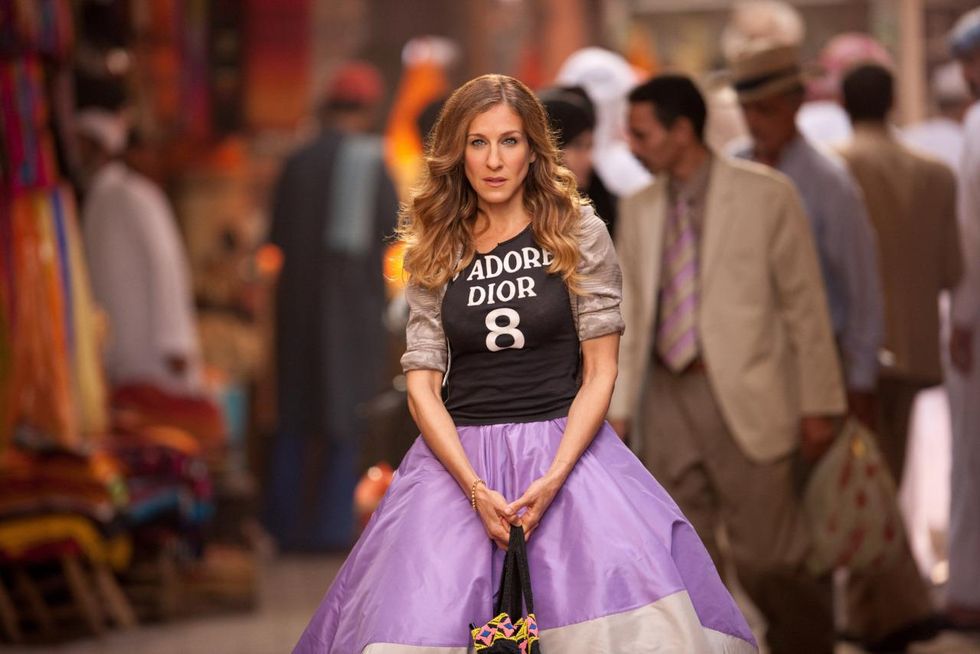
Not the Golden Age of Fashion
It’s hard to admit, but the show which inspired generations of fashion lovers maybe, in hindsight, did not always have the best styling.
The show itself can’t really be to blame — the early 2000s era was hardly the golden age of fashion.
The more-is-more fashion ethos of the time feels gaudy and gauche through a contemporary lens. After surviving the logomania fashion era and settling into pandemic fashion, it’s safe to say that there is a place for extravagance, but senselessly piling together brands and it-pieces is not an outfit.
The infamous Instagram account @everyoutfitonsatc chronicles, you guessed it, every outfit on Sex and the City. And while it can be satisfying to feast on some of the gems of the show, it soon becomes glaringly obvious that the era of kitsch and over-the-top styling is over.
Emily in Paris, the 2020 phenomenon (if not for the wrong reasons) by Sex and the City creator Darren Star, underwent criticism for Emily’s styling, which often recalled Carrie Bradshaw, but translated in this era as avant-basic.
Fashion influencers and editors have also recently had to answer for how their buying habits respond to growing calls for sustainability in the industry, from shopping from small, ethical brands to just shopping less. It’s no longer cool to drown in clothes you never wear; it’s an ethical and Marie Kondo nightmare.
The revival will no doubt adjust for the times, though I can’t imagine Carrie laying around in a pandemic sweatsuit like the rest of us. Perhaps she’ll be in #gifted garb from the likely Instagram promotions she engages in — we’ll have to wait and see.
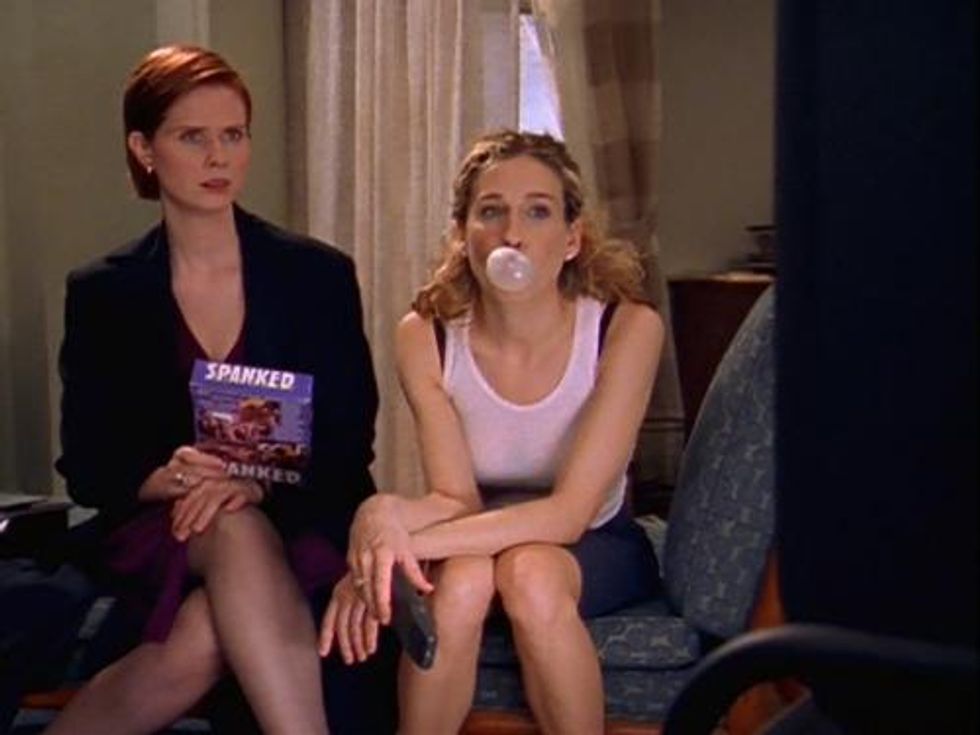
Sex and Fashion at the Expense of Everything Else
Sex and the City, for its flaws, was revolutionary for giving women space on television to talk about sex and fashion on their own terms.
The series ushered in an era of shows about women living their lives, celebrating their friendships, having problems and careers and dynamic story arcs.
However, despite the women’s different careers and distinct personalities, sometimes their lives revolved around sex and fashion at the expense of everything else. In an episode where Carrie starts dating a local politician, she reveals she’s not even registered to vote … not a good look in 2021.
With contemporary shows spending more time discussing social and political issues, and current audiences expecting it, it’s both a comfort and a flaw that Sex and the City just … doesn’t.
For some, watching endless reruns of the series is a balm for the stress of the current times. However, any revival won’t be able to fall on the same excuses. In a more politically aware climate, the show doesn’t have to tackle major issues (and I’d rather it didn’t try), but it can’t ignore them.
As viewers, neither can we. While it’s one thing to watch the occasional cringe-inducing episode of Sex and the City and dismiss it as a product of its time, but we have to demand better from the new era.
As revivals and reboots abound, from this new revival to the Gossip Girl reboot also coming to HBO, we don’t have to analyze every old episode, but we do have to understand the context that allowed the less informed, more harmful content to go excused on some of the most popular shows on television.
We’ll see if the show retains its charm in its new iteration, or if attempts at remedying its flaws make it feel bloated.














